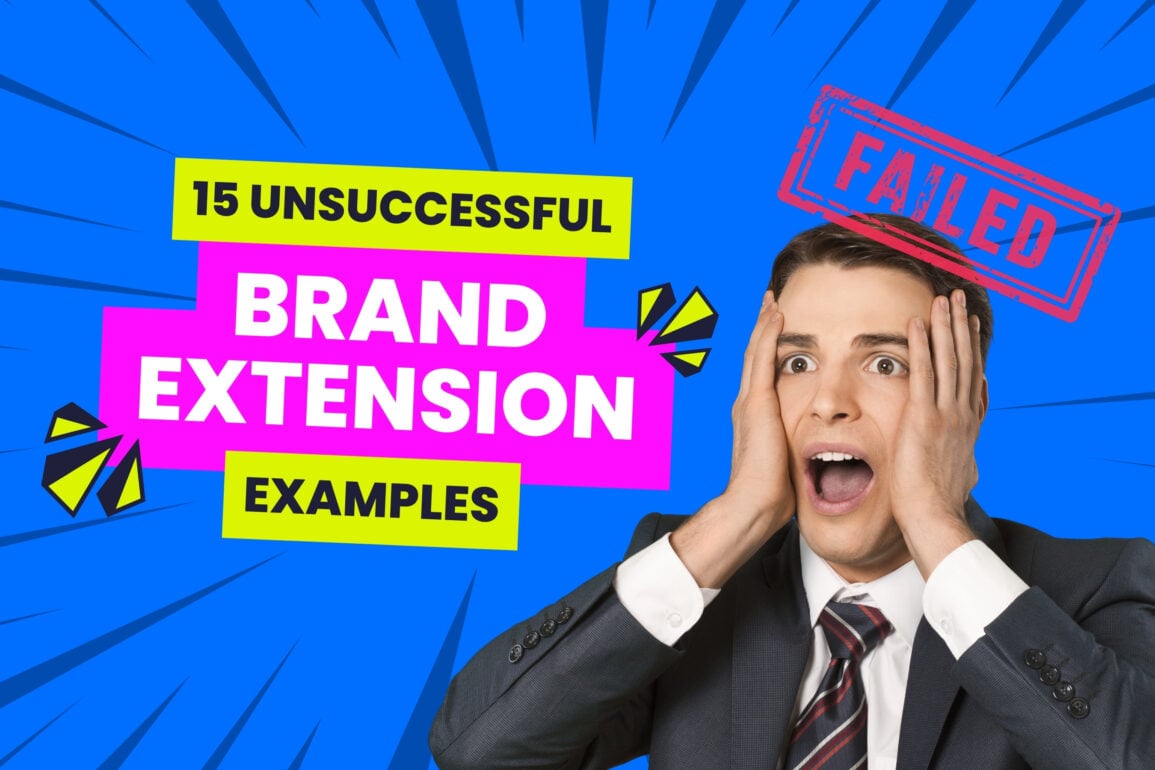Marketing spend optimization: 10 ways to maximize your budget

Marketing spend optimization is an issue many companies struggle with. Leading brands spend anywhere up to 9.5% of their annual revenue on marketing, and for good reason. An effective promotional strategy is crucial to building brand awareness, and increasing conversions.
However, as economic uncertainty continues to plague businesses, and companies search for ways to do more with less, it’s crucial to ensure you’re getting the right return on your marketing investment. Learning how to optimize marketing spend isn’t just about finding ways to cut costs.
It’s about ensuring every penny you spend on promoting your business has a positive impact on your bottom line. Effective marketing spend optimization ensures you can allocate your advertising budget and resources more strategically, turbocharging business growth.
The question is, how exactly do you optimize your marketing budget?
Based on our experiences working with world-leading brands from every industry, we’ve put together our top strategies for maximizing your marketing spend.

What is marketing spend optimization?
Marketing spend optimization, or marketing budget optimization is the process of evaluating your marketing strategies, to determine how to get the best return on your investment. It’s the key to ensuring you get the right results from your campaign, without wasting crucial cash.
Companies use everything from the strategic analysis of historical data to marketing audits, to quantify the value of each marketing campaign. This means they can make strategic decisions on how to use their resources to achieve the right marketing goals.
Optimizing ad spend isn’t a new concept. For years, companies have relied on the data and results of previous campaigns, combined with market research, to make budgetary decisions. However, in recent years, the need for marketing spend optimization has grown.
In 2023, inflationary pressures, economic uncertainty and changing consumer preferences caused a significant decrease in marketing budgets for around 45% of companies.
While strong marketing campaigns are crucial to business growth, many companies still cut their promotional strategies when faced with financial strain. Unfortunately, some do this without first understanding which of their marketing efforts are really working.
The only way to ensure you’re investing in marketing strategies that deliver results is to take a data-driven approach to marketing spend optimization.

10 ways to optimize marketing spend in 2024
Studies show that the difficult economic environment will force marketers to make their budget stretch further in 2024 and beyond. No business, small or large, can afford to waste money on a marketing strategy that doesn’t drive results.
Fortunately, there are plenty of ways you can optimize marketing budget strategies, to ensure you’re getting the best results from your marketing dollars.
1. Conduct a marketing spend analysis
Conducting a marketing spend analysis should be the first step in any budget optimization effort. If you don’t know which marketing channel or campaign is driving results for your business, you can’t make intelligent decisions about how to use your budget.
To begin, make a list of all of your current marketing strategies. This may include things like email marketing, social media advertising on different platforms, paid digital ads, and in-person advertising. Next, define the goals of your marketing campaigns.
While the overall goal of your marketing strategy may be to increase conversions and revenue, you may be striving for different targets with each campaign. For instance, you may want to increase brand awareness, boost your business reputation, or improve customer retention.
With your goals in mind, assess the ROI of each marketing campaign, looking not just at conversion rates, but any result that might benefit your business.
You might look at engagement rates on social media, or repeat visits on your website from email subscribers. You could also consider how frequently customers contact your sales teams. This strategy will show you which campaigns are working, and which you might need to reconsider.
2. Dive deeper into your data
Data is the key to making intelligent marketing spend optimization decisions. Unfortunately, studies show that up to 80% of business data goes unused. In today’s digital world, companies have unique opportunities to tap into more actionable insights than ever before.
You can use search engine optimization tools like SEMRush and Ahrefs to track the ranking potential of your content campaigns, and Google analytics to track website traffic.
Social media pixels can help you determine which of the various channels you use drive the most customers to your website.
There are even tools which can help you to identify which buttons and forms on your landing pages increase your conversions. To make sure you’re using all of this data correctly, develop a process for analyzing all of the insights available to you throughout the customer journey.
This process could include designing a checklist for all the questions you want to answer when optimizing ad spend, such as:
- How do CAC (customer acquisition costs) vary between channels?
- Which channels help you to attract your ideal customer?
- What types of content increase traffic during specific stages of the buyer journey?
You can even use tools to help unify all of your data into a single platform, so you can track the performance of every channel and campaign, and compare your results.
3. Align your marketing strategy to the customer journey
When optimizing ad spend and marketing budgets, many companies forget the importance of building strong relationships with their target audience. Effective marketing isn’t just about grabbing the attention of buyers when they become aware of a specific problem or goal.
Your marketing campaigns should help to position your brand as the trustworthy and credible solution your consumer needs. With this in mind, assess your current marketing strategy, and ask yourself how you’re delivering value to your audience, throughout the buyer journey.
How do you help consumers discover the solution to their problems in the “awareness” stage? How easy is it for them to compare your solution to offerings from other brands? How do you give them the confidence to make the right decisions with informative landing and product pages?
Using your marketing strategy to elevate the customer experience deliver a host of benefits. It strengthens brand equity, and shows a commitment to your audience that enhances your reputation. It also means you can benefit from higher customer lifetime value levels.
Investing in nurturing a strong relationship with your customers means you earn their trust and loyalty. Loyal consumers will generally purchase more over time with your company, forgive your brand for price increases, and even help to elevate your advertising campaigns with referrals.
4. Assign more of your budget to customer retention
When dealing with low marketing budgets and increasing competition in their industry, many companies focus all of their attention on attracting new customers. Many brands spend a significant amount of their marketing budgets on finding ways to increase brand awareness and recognition.
While it’s important to attract as many potential customers to your business as possible, it’s important to remember that retention is just as important as acquisition. This is particularly true in a difficult economy, where consumer loyalty is diminishing and spending habits are changing.
Updating your marketing strategy to focus on your existing customers, can be an excellent way to save money. Studies show that there’s a 60-70% chance of selling to an existing customer, but only a 5-20% chance of converting someone new.
What’s more, acquiring new customers is up to 25 times more expensive than retaining existing buyers. Look at your existing marketing funnel and ask yourself how you can strengthen relationships with your current audience. Can you use email marketing to deliver exclusive offers to clients?
Could you use loyalty programs to increase repeat sales, or referral strategies to turn your customers into advocates for your brand? Used correctly, a strong retention strategy can even save you money on future campaigns, by offering an opportunity to tap into free word-of-mouth marketing.
5. Pivot to digital marketing strategies
There’s no one-size-fits-all marketing mix that delivers the same results for every business. Companies from different industries and environments use a variety of channels in their marketing plan to unlock the right results.
However, we often find that companies can achieve more with less, when they pivot from traditional advertising to digital marketing.
Although offline advertising like radio ads, television ads, and even promotional events are ideal for companies targeting local audiences, digital marketing strategies have more scope. They allow business leaders to reach a wider number of customers, for a lower cost.
For example, a social media marketing strategy gives you an excellent opportunity to reach millions of online consumers. There are 4.8 billion social media users worldwide, and most social platforms come with targeting tools to help you reach your specific intended audience.
You can also nurture customers consistently over social media, without having to spend a fortune on new radio or television campaigns. Other digital marketing strategies can also deliver an excellent return on investment.
Content marketing gives you an excellent way to build thought leadership and increase brand awareness, with minimal upfront expense. Email marketing delivers an average $38 return for every $1 spent and allows you to build strong relationships with your audience.
As an added bonus, the results of digital marketing activity are often much easier to track. While it’s difficult to track the exact ROI of campaigns on offline channels, there are plenty of tools that can help you calculate the returns of your online campaigns.
6. Use your marketing tech stack more effectively
Technology is one of the most valuable tools marketing teams can access. There are resources that can help businesses with virtually every type of marketing activity today, from scheduling campaigns to creating content. However, less than 60% of marketers are using these tools effectively.
If you’re not taking full advantage of the benefits your technology can offer, then you’re wasting your marketing budget on unnecessary software and subscriptions.
Take a look at your current “martech stack” and ask yourself:
- Are you using all of the features available in those tools?
- How much time or money are your resources saving you?
- Are there marketing processes you could streamline with new technology?
You may discover that you’re wasting a lot of your digital marketing budget on different resources for social media monitoring and scheduling, when you could migrate to a platform that combines the two.
Or you may discover you’re over-spending on machine learning tools for market research, when you could be using the AI tools built into your CRM platform or keyword research software. You might even find you’re buying too many licenses for a piece of tech only a handful of marketers use.
7. Optimize your marketing operations
Sometimes, the best way to invest in marketing spend optimization is to focus on empowering your marketing teams. Ensuring team members have access to the right technology is a good first step.
Collaboration tools can help marketing professionals work more effectively together. Project management tools make it easier to create content and campaigns according to deadlines. Market research tools can help you track market conditions and customer trends.
However, there are other ways you can optimize marketing operations too, such as:
Aligning your teams
As mentioned above, a strong marketing strategy addresses the full customer journey. It’s not just about raising awareness.
To ensure you have a clear view into the full customer journey make sure your sales, marketing, and customer success teams are aligned. Encourage them to collaborate, share data, and brainstorm strategies together.
Create standard operating procedures
Standard operating procedures or “SOPs” are essential guidelines your employees can follow which highlight the best practices for certain marketing efforts.
Creating SOPs based on your marketing insights and key performance indicators will help to streamline, and improve your day-to-day activities.
Automate more
Marketing automation tools can save employees significant time on creating, scheduling, and analyzing campaigns. This means they have more time to focus on researching current trends, or creating more compelling content.
8. Consider outsourcing certain tasks
A lot of marketing leaders think marketing spend optimization involves cutting ties with agencies, partners, and contractors, to focus on more in-house work. If you already have all the skilled professionals you need to create amazing campaigns in-house, this can be a good strategy.
However, as consumer behavior and marketing channels continue to evolve, you may find your existing team members have a few skill gaps. Rather than hiring new full-time employees to help with things like influencer marketing campaigns, or new initiatives, consider outsourcing.
Outsourcing specific tasks to contractors, freelancers, or marketing agencies can be an excellent way to unlock skills and resources, without spending a fortune. The great thing about this strategy is you’re not tied into working with these professionals forever.
You can hire branding consultants, content experts, and data science professionals to support your marketing team for as long as you like. You can even work with contractors to experiment with new marketing strategies, when you’re exploring new ways of optimizing ad spend.
9. Make the most of the resources you have
Sometimes, you do need to spend money to make money. If you’re struggling to get the most out of your current marketing campaigns, you might find you need to spend extra before you can start cutting costs. For example, you might need to invest in new software or contractor assistance.
However, sometimes, you can increase the ROI of your marketing assets, without spending any extra money. If you already have plenty of valuable content on your blog to support customers throughout the buyer journey, consider repurposing some of it.
You can use artificial intelligence to summarize long blog topics into scripts for videos or social media posts. Or you might transform your existing whitepapers, webinars, and case studies into slideshows and infographics for different audiences.
Repurposing existing marketing materials is an excellent way to make your money go further, and achieve higher ROI for a lower customer acquisition cost.
10. Constantly test, analyze, and update
Finally, ensuring you’re taking the best approach to marketing isn’t something you just do once. Marketing spend optimization is a constant process for most businesses. You’ll need to ensure you’re constantly tracking your results from various platforms and campaigns.
This means leveraging tools to ensure you can see the historical and real-time impact of your marketing campaigns, and how they influence things like conversion and retention rates. Using the goals you set during your initial marketing stack analysis, make a list of key metrics to monitor.
Set time aside in your strategy to regularly review your marketing data, and determine whether your campaigns are still delivering positive outcomes. If you notice your ROI starts to drop in certain areas, and rise in others, don’t be afraid to adjust your strategy.
You may suddenly find a new strategy on TikTok delivers better results than your previous direct mail marketing strategy. Or you might discover that your customers are no longer interacting with you on Twitter, but frequently engage with your company on Instagram.
Don’t just wait for an annual marketing spend optimization review before you start implementing changes. Stay agile, and be prepared to adapt to the latest marketing trends.

Bonus tip: Work with the experts
As you can see, there are various ways companies can approach marketing spend optimization in 2024 and beyond. However, marketing budget allocation is rarely easy to master, particularly for smaller businesses, just getting started with new advertising campaigns.
In a survey of senior marketing executives and chief marketing officers, around 20% of respondents said achieving a better ROI on their marketing budget was the biggest challenge they faced last year.
Optimizing your marketing activities can mean evaluating huge volumes of data from different data sources, experimenting with advanced promotional strategies, and taking regular risks. Sometimes, the best way to ensure you get the right results is to work with an expert.
Accessing the support of a branding or marketing consultant can be an excellent way to gain a competitive advantage when optimizing ad spend.
Industry experts can offer unique insights, assistance with marketing analysis, and content creation support, to help boost your chances of better results. Most will also use reports and dashboards to give you real-time insights into how your campaigns are paying off.
If you’re building a new media mix, or struggling to transform your customer insights into data-driven decisions, consider working with the experts.
Mastering ad spend optimization
Ultimately, marketing spend optimization is something every business needs to invest in. All companies need to promote themselves to capture the attention of their target audience and increase revenue.
However, it’s easy to over-spend on strategies that don’t work, and ignore the ones that do.
Learning how to optimize your ad spend correctly, using the strategies outlined above, will ensure you’re getting the best return on your marketing dollars.
With the right data, customer insights, and strategic campaigns, you can reduce the cost of your marketing strategies, without compromising on incredible results.
Need help getting started? Reach out to Fabrik today to learn how we can help optimize your marketing spend and budget allocation.
Fabrik: A branding agency for our times.
















